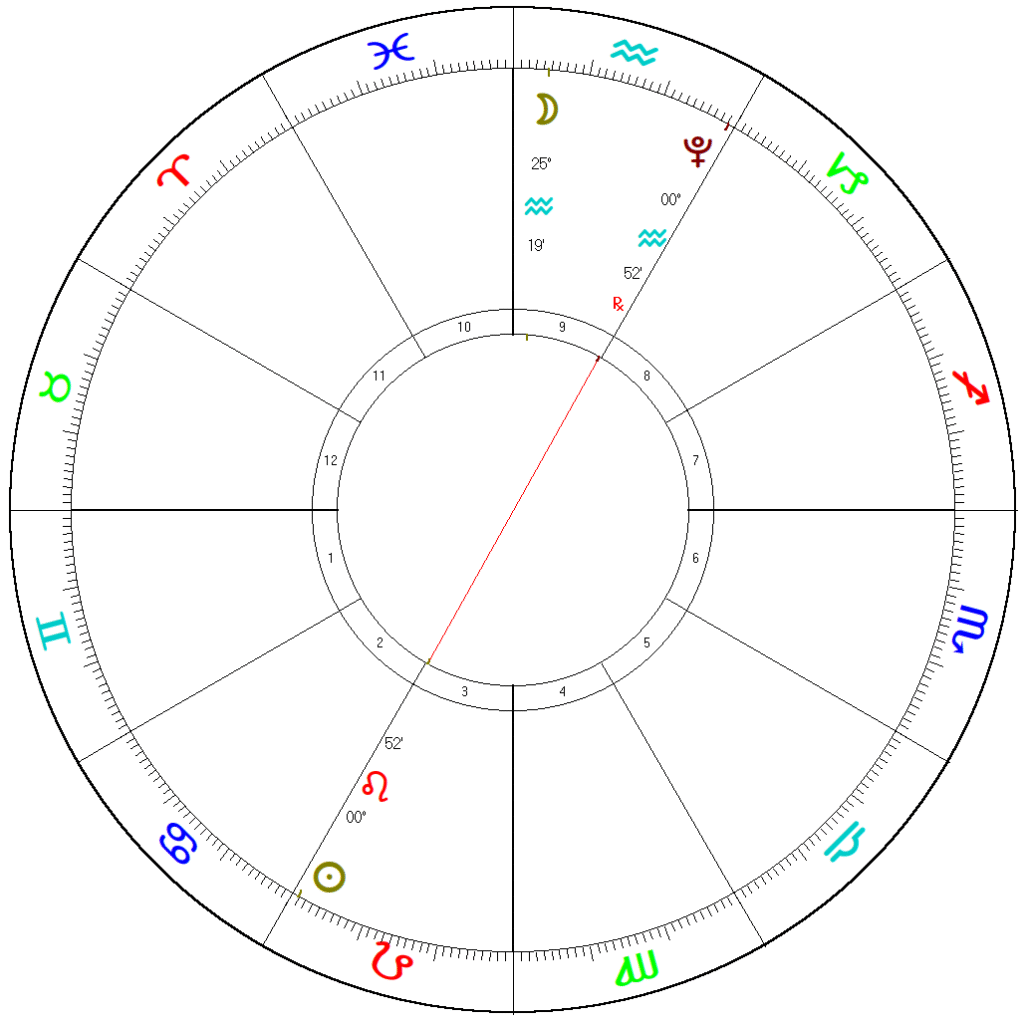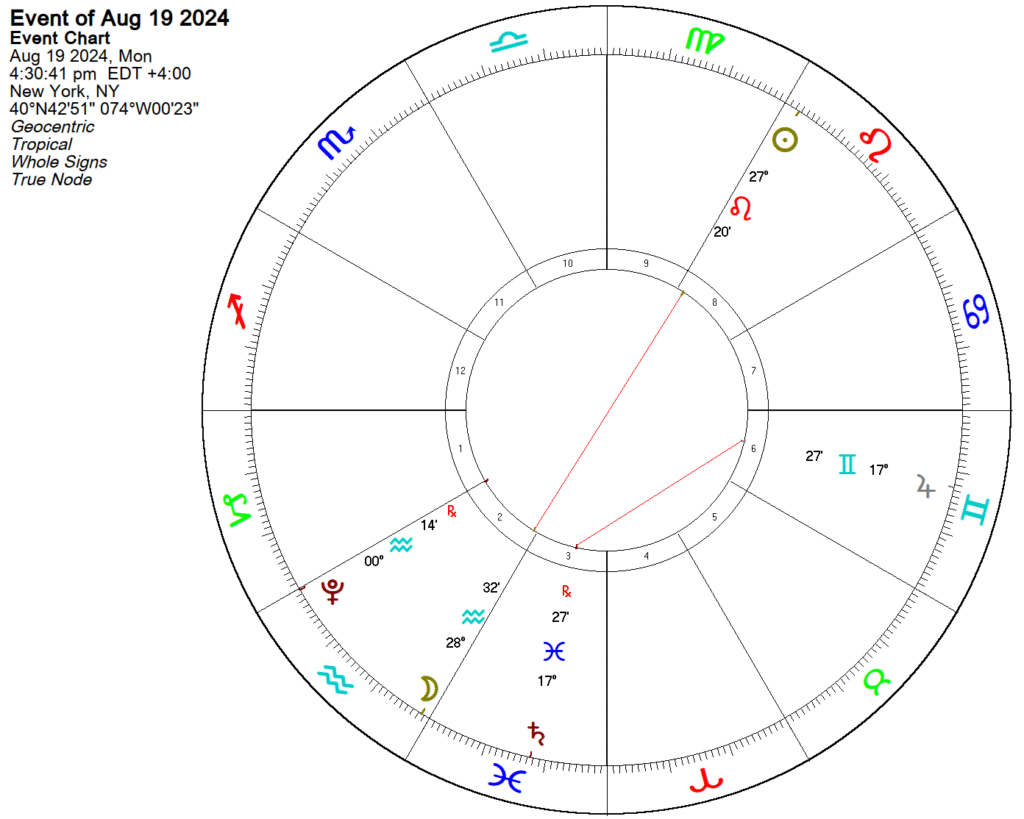Planetary Interactions – Part 19 of The Chemistry of Time
As mentioned earlier, there are four key components to the system for interpreting the calendar. We explored two of them at length – the territorial elements and the active elements. A third component is known as the aspects and it deals with the relationships between the active (planet) elements. Aspects are combinations of planets and they arise when two planets are at geometrically significant angles with each other. The Greeks ascribed the significance of these angles to the ability of planets to “see” each other when configured in such a way. In our discussion of the mechanisms it was deemed more likely that the combined force applied to the Sun was responsible for the observed effects. What we can determine certainly is that these particular angles allow the planetary elements to operate together, at the same time, in ways that do not occur otherwise. Consider that in order for various chemical substances to form a compound they must be in certain heat or vibratory states to allow for that. Take a block of ice and pour some sugar onto it and what do you get? A mess. Now warm the water to change it to a liquid state and add the sugar – it will dissolve and bond with the water, forming a solution. A similar process is responsible for the significance of the angles, but it is what occurs next which is of importance for understanding the aspects. Observe the chart below, reduced to focus on just the Sun, Pluto, and the Moon:

It is easy to see that the Sun, at 0 Leo, is directly opposite Pluto at 0 Aquarius. The red line in the chart highlights the presence of this aspect. The significant aspects occur when planets are at the below distances from each other:
Conjuction: 0 degrees
Sextile: 60 degrees
Square: 90 degrees
Trine: 120 degrees
Opposition: 180 degrees
It is when planets are configured to each other at these angles when events are known to transpire. The precise timing can be determined through a complex variety of methods, but the presence of the aspect itself is typically close enough for day-to-day purposes. What is being shown is that two active elements are forming a combination and the time when the event occurs is when the reaction culminates. Key timing rules include applying, which means that it is when the planets approach the exact angle that you should expect events, whereas after they pass the exact angular position they are separating and the effects are expected to taper off rather quickly. Further there is activation by the Moon, which is the “reflector.” The Moon acts as a catalyst and its presence (in angle) to the combining planets is involved in the timing. As we see in the above chart, the Moon is present in the same territory as one of the planets (Pluto) involved in the combination. This implies that the combination is activated. Further there is the case of overcoming, which talks about which planet in the combination has the upper hand and greater influence. This is most important in the case of a square aspect, as shown below:

In this chart we Saturn (the red h) in an overcoming square position to Jupiter (the gray 4), and a red line in the chart illustrates this for us. Additionally we see an opposition between the Moon and the Sun – an aspect more commonly known as a Full Moon, when the Moon is reflecting the Sun that is generating light, and the volume of light being reflected is at its maximum because the Moon is at the angle which provides it the greatest visibility of the Sun. This brings us to the general reputations of the aspects, as per below:
Conjunction: acting at the same time
Sextile: assisting each other
Square: working at cross-purposes
Trine: cooperating fully
Opposing: in stand-off
As the descriptions imply, sextiles and trines are often considered postive or soft aspects whereas squares and oppositions are thought of as negative or hard aspects. The conjunction is structurally neutral and the results of such aspects have mostly to do with the way the specific active elements in question work when combined. Further, our chart example showing the square between Saturn and Jupiter has Saturn preceding Jupiter, which puts it in what is known as overcoming position. This tells us that in the cross-purposes negotiating that is occurring, Saturn is likely to have the upperhand. This is determined more specifically by measuring the strength of each of the planets – if one is in much greater dignity this can overcome the overcoming. In our example however neither planet is dignified so the basic concept remains – Saturn is the winner of this particular contest of wills.
To interpret a moment of time it is the aspects which are primary. First you check the interactions of the planets and then you measure the strength and conditions of the planets by their territorial and other dignity to determine the outcome of the interaction, but it is the interaction itself which is generating the events. Aspects are used to measure the unfolding of time whereas the elements are showing us the formula behind it. As such the chemistry comparison is less useful for aspects and descriptions from another system which measures and unfolds over time is more useful.
In Music Theory we understand that one component of a song is known as the accompaniment. It is usually a rhythm or harmony which repeats in the background while in the foreground play tones or notes, which when organized properly and at certain intervals generate a melody. The individual aspect combinations which constantly unfold produce the tones, whereas the previously discussed cycles generate the accompaniment upon which those tones play. It is when the tones form a notable succession that a something akin to a melody is generated and when that occurs it could be said that we are living through interesting times. You may think that is the case, but if you read the sheet music it says that the melody is still some time off into the future from our present moment. For now, we are still collecting the tones which will assemble themselves into the notable succession that is to come.


Leave a Reply